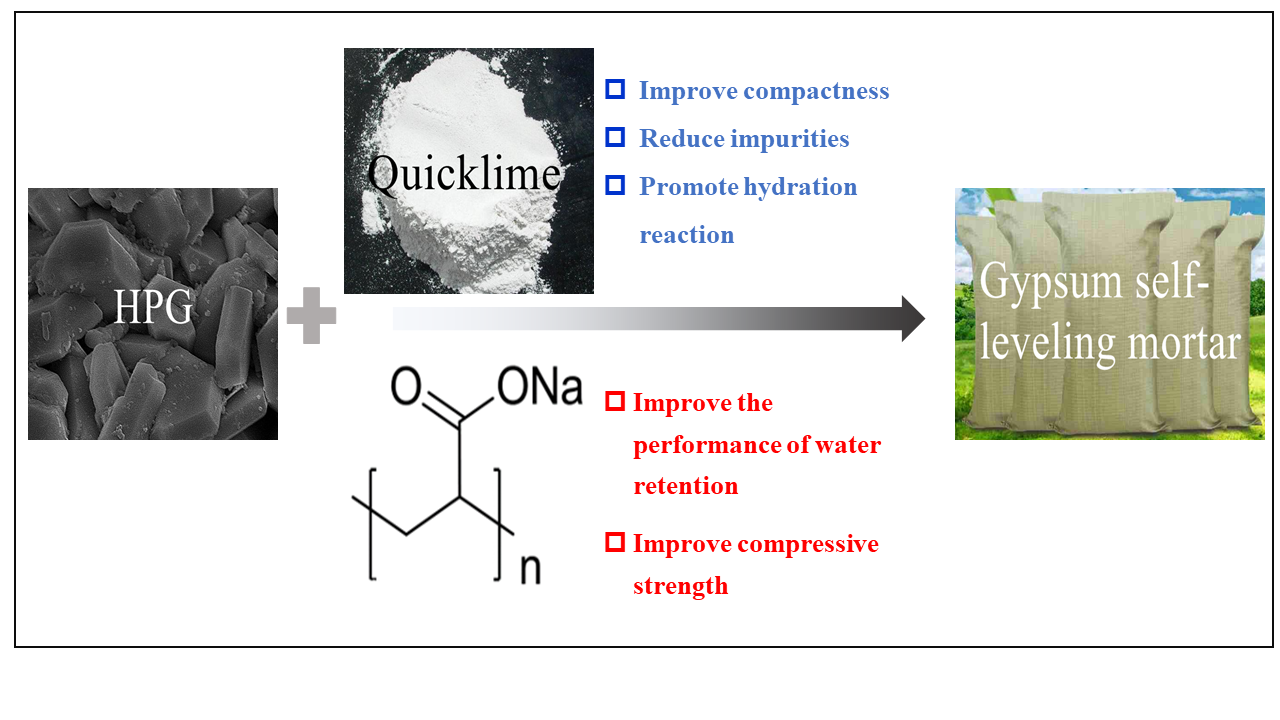 Open Access
Open Access
ARTICLE
Study on Performance Regulation and Mechanism of Quicklime and Biopolymer on Hemihydrate Phosphogypsum
1 College of Civil and Resource Engineering, University of Science and Technology Beijing, Beijing, 100083, China
2 Beijing Key Laboratory of Urban Underground Space Engineering, University of Science and Technology Beijing, Beijing, 100083, China
3 State Key Laboratory of High-Efficient Mining and Safety of Metal Mines, Ministry of Education, University of Science and Technology Beijing, Beijing, 100083, China
* Corresponding Author: Juanhong Liu. Email:
(This article belongs to the Special Issue: Renewable and Biosourced Adhesives)
Journal of Renewable Materials 2022, 10(2), 373-384. https://doi.org/10.32604/jrm.2022.016380
Received 01 March 2021; Accepted 19 April 2021; Issue published 30 August 2021
Abstract
In order to reduce the influence of impurities in hemihydrate phosphogypsum(HPG) on the environment and improve the workability of HPG, the effects of the content of quicklime and types of biopolymer (hydroxypropyl methylcellulose, xanthan gum, sodium polyacrylate(PAANa)) on the compressive strength, softening coefficient and ultrasonic velocity of HPG were evaluated. When the content of quicklime was 1.5% and the content of PAANa was 0.2%, HPG had the best mechanical properties and workability, its water retention rate can be increased by 5.8%, and unconfined compressive strength of 3 days increased by 10.3% and 7 days increased by 13.1%. Through the analysis of scanning electron microscope and X-ray diffraction, it was found that the hydration reaction of HPG was more sufficient, the pores size and number decreased, the number of impurities on the crystal surface decreased obviously, and CaF2 and other substances were formed by the reaction after the addition of quicklime. After adding quicklime and PAANa, the indicators of gypsum self-leveling mortar prepared by HPG meet the requirements of the standard.Graphic Abstract

Keywords
Cite This Article
 Copyright © 2022 The Author(s). Published by Tech Science Press.
Copyright © 2022 The Author(s). Published by Tech Science Press.This work is licensed under a Creative Commons Attribution 4.0 International License , which permits unrestricted use, distribution, and reproduction in any medium, provided the original work is properly cited.


 Submit a Paper
Submit a Paper Propose a Special lssue
Propose a Special lssue View Full Text
View Full Text Download PDF
Download PDF Downloads
Downloads
 Citation Tools
Citation Tools